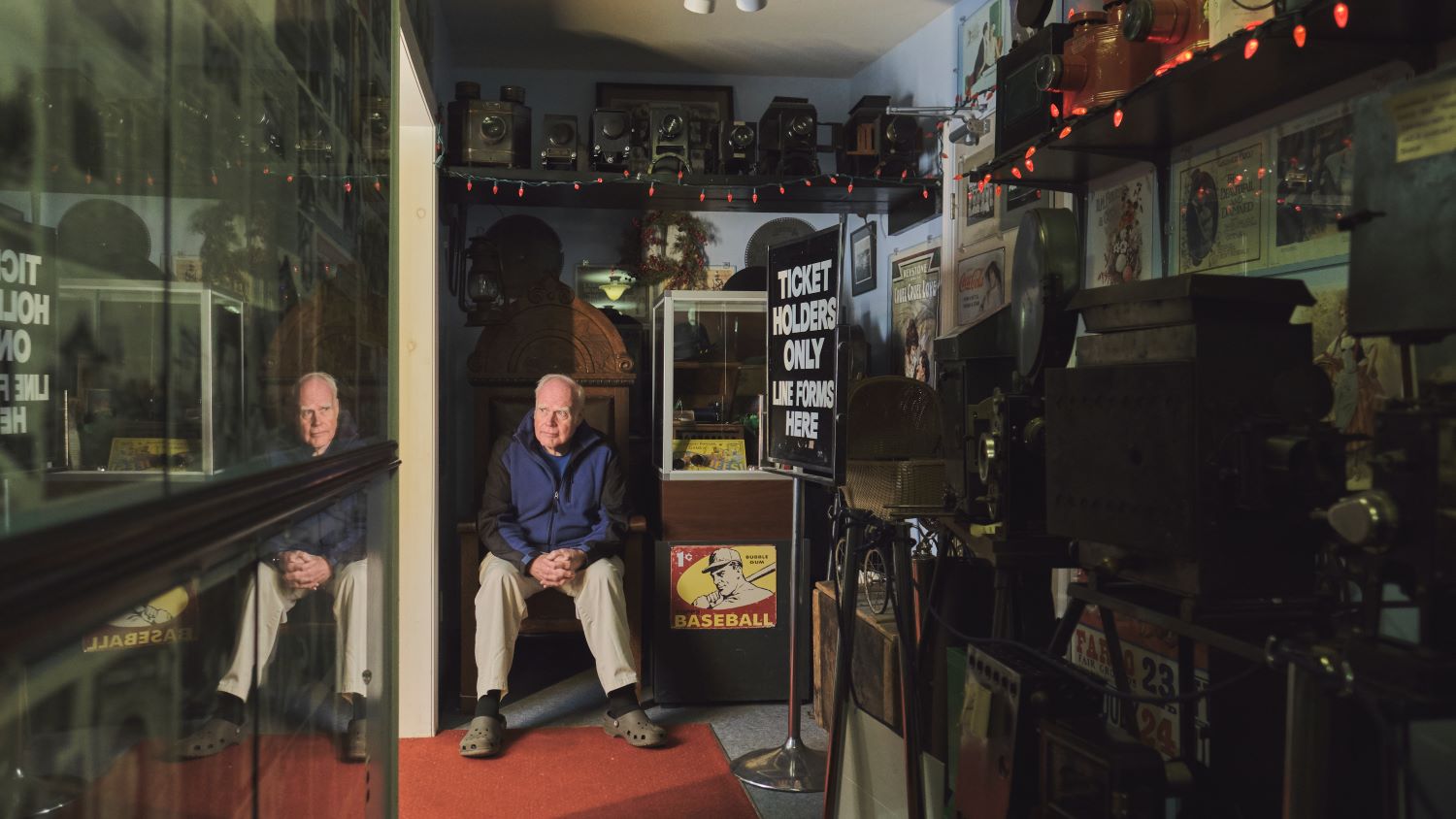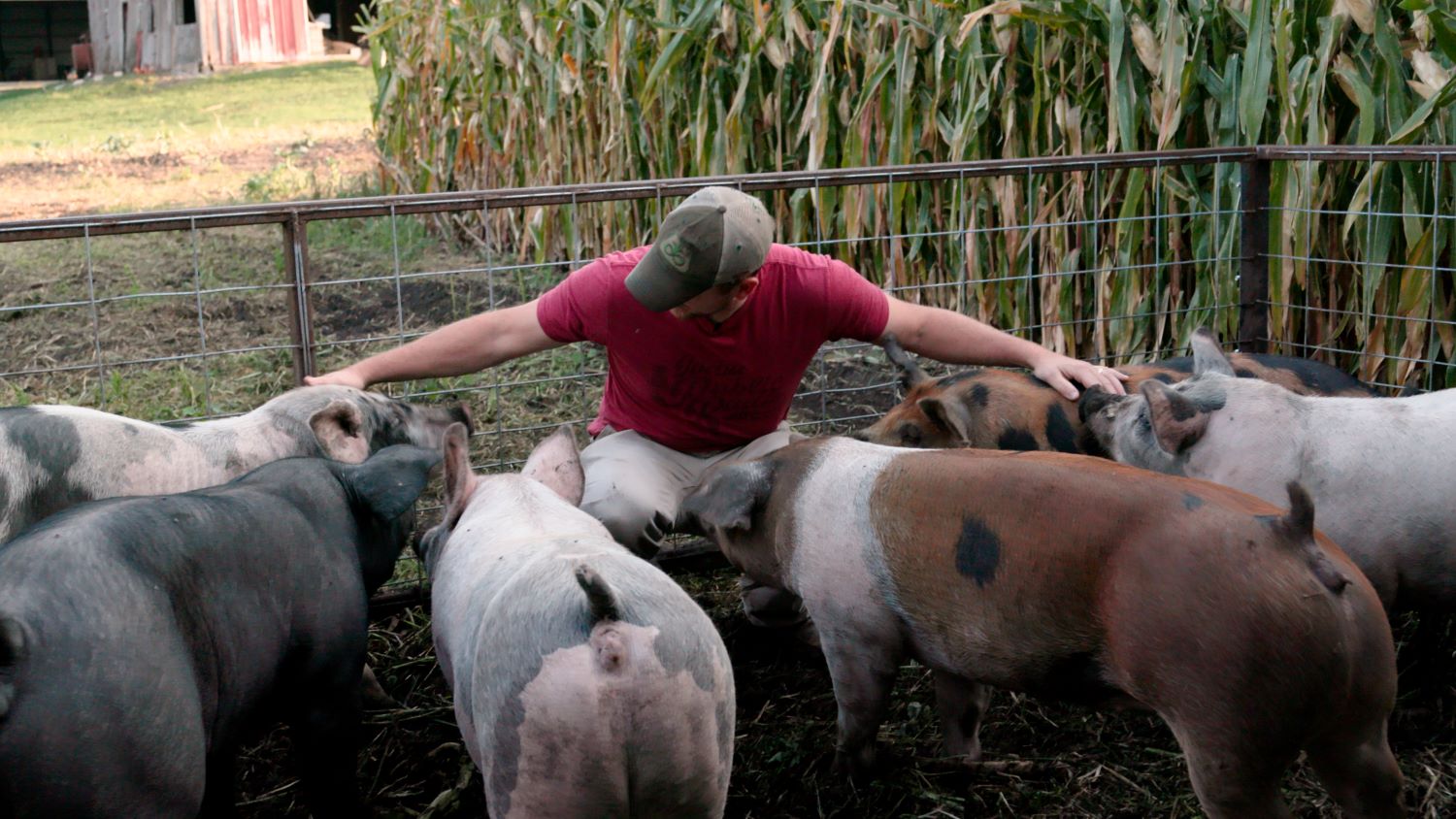The Movie Man
(Canada, 88 min.)
Dir. Matt Finlin
It doesn’t seem like hyperbole to say that we nearly lost the movies. Moviehouses, multiplexes, and independent cinemas suffered greatly during the first two years of the COVID-19 pandemic and, arguably, continue to struggle. But they also symbolize the togetherness we missed during the prolonged periods of lockdowns and isolation. There is something simply magical about enjoying a movie on the big screen with an audience. Nobody understands the power of that collective joy quite like the people who ensure that the reels—or digital files nowadays—run smoothly while the popcorn crackles in the background.
Movie man Keith Stata is one of those people. The proprietor of the Highlands Cinemas in the small town of Kinmount, Ontario, Stata knows that the movies serve as far more than mere escapism for the people who visit his Kawartha Lakes picture show. He’s now his own big screen hero, offering more might and inspiration than all caped crusaders of the multiverses combined.
Matt Finlin’s appropriately titled documentary The Movie Man shares State’s passion for movies and his truly unique five screen theatre. It’s a must-see for anyone who loves movies. Stata invites the camera to tour Highlands Cinemas, as he tells the origin story of setting up a screening room to serve a small town of 300ish people. However, he shares that he always envisioned the cinema as something of a destination for the neighbouring towns and many tourists who flock to cottage country.
As people discovered the Highlands, and found it a great escape on a summer’s night, Stata tells how he plopped an extra screen here or there with additions and expansions to the movie house. Five screens later, the Highlands boasts a movie museum with memorabilia and antique projectors guiding patrons from one screening room to the next. It’s both a hoarders’ crap factory and a temple to cinema. Take your pick.
The Movie Man structures Stata’s legacy with Highlands Cinemas around his battle to keep it afloat. “How did we get here?” Stata asks Finlin while seated in one of the Highlands’ screening rooms in 2022. He looks back at the challenges of the two years that preceded the present with footage from 2018 and 2019 showing the theatre already rolling with the punches in a changing industry.
Stata offers a truly wonderful character through which The Movie Man observes the challenges of keeping an independent cinema afloat. He’s a jovial curmudgeon, and he’s earned that right after four decades in the business. Stata groans that Hollywood isn’t making movies that inspire audiences to leave the house. He clearly doesn’t like superhero movies (“rebooted off a cliff,” he says of Hollywood’s recent offerings) and worries that streaming and piracy don’t help. The film observes how the Highlands adapts to fluctuating audience habits by shifting screening times and the number of shows per evening. Simply put, Stata can’t run an 18,000 square foot movie house with only three to four people sitting in each room.
Then there are the challenges of digital cinema. Finlin watches as Stata struggles with the quirks of the DCP, a high-priced headache of circuit boards, red lights, and key codes that the movie man simply unplugs and desires to give a good thrashing. But as Stata takes Finlin on a grand tour of all the old projectors in the Highlands, and as The Movie Man’s lovingly cinematic 35mm images offer a grain that inspires people to adore movies in the first place, the film evokes a special affinity for celluloid that all good movie geeks share. Prize gems in Stata’s collection of hundreds of projectors include a 3D one from the iconic Cinesphere, a 1912 antique, and one recovered from a pile of pigeon shit and bird corpses. Everything here is a peculiar labour of love.
Even when Stata shows Finlin some of the Highlands highlights, he does so with good-humoured cantankerousness. The segment that focuses on the cinema’s famed popcorn, for example, sees the movie man extol the perfect recipe while griping about recent tricks in the trade. He uses coconut oil, unlike competitors who favour canola and make their popcorn taste like fish.
The documentary shows that the Highlands’ popcorn really is a hit, especially with the wild animals who stop by for a snack. One attraction of this ramshackle cinema in the woods is the array of wildlife it draws. Bears, deer, skunks, and raccoons flock to the Highlands for leftover popcorn. Highlands employees—another source of Stata’s frustration given high turnover rates among students—count feeding popcorn to the pack among their duties.
And then there are the cats. The Highlands counts a whopping 45-49 cats among its attractions. The felines scurry around the grounds in an intricate wire tunnel system. They’re something of a novelty and rallying point for the community, as donations to the cats come in steady streams during the pandemic. Stata frets as much about the future of the kitties as he does his cinema, worrying that whomever takes over the place won’t continue to care for the many, many, many cats. Finlin has a fine eye for the felines, too, offering some of the best four-pawed movie magic since Kedi.
All these quirks that make the Highlands unique are essential to the film’s surprisingly moving account of the fight to survive during COVID. As a seasonal enterprise, moreover, the Highlands simply can’t justify the cost of opening when social distancing required limited seating and electronic seat selection—something the analogue, cash-friendly venue can’t support. The film also shows the challenges of accessing relief money, and the financial toll that two years’ of closure makes as Stata makes a do-or-die decision to reopen in 2022. He worries that nobody will come out to the movies, but enlists an army of helping hands to clear the brush, rid the theatre of mould, and feed the cats to make that gamble.
However, Stata embraces the role of the scrappy underdog well. He does it not for the money—and he never did—but for sharing his love for movies.
An effective score by Broken Social Scene’s Kevin Drew adds the right heart to The Movie Man. The film evokes the sense of wonder one experiences while taking in a good story on the big screen, looking up in awe like Amélie who takes pleasure in all looking back at all those wonderful people in the dark transfixed by the screen. As The Movie Man follows Stata’s dedication to keeping the screens running and offering a rare point of consistency in his small town, the film really gets to the heart at what makes the moviegoing experience so magical. Better than the adventure of Top Gun: Maverick, the bombast of Oppenheimer, or the dazzling effects of Avatar, no film has better articulated the power of seeing a movie in a theatre.
When the masses flock back to the Highlands and look delighted as they roam to the screening rooms, popcorn in hand, The Movie Man offers a deeply touching reminder that movies offer far more than entertainment. They’re occasions for community building and shared experiences. Stata likens movies to memory banks and frequently cites his love for The Time Machine throughout the documentary, noting how moviegoing experiences define key moments in people’s lives, like first dates, encountering new ideas, of feeling something extraordinary. He takes pride in creating these memories again and again for thousands of people. That legacy is sure to endure with The Movie Man—and hopefully the herd of cats will thrive too.














